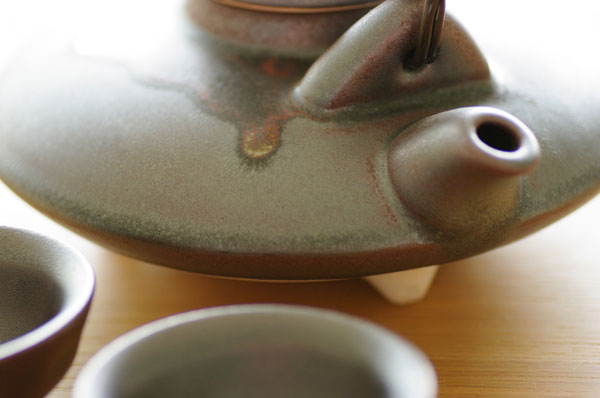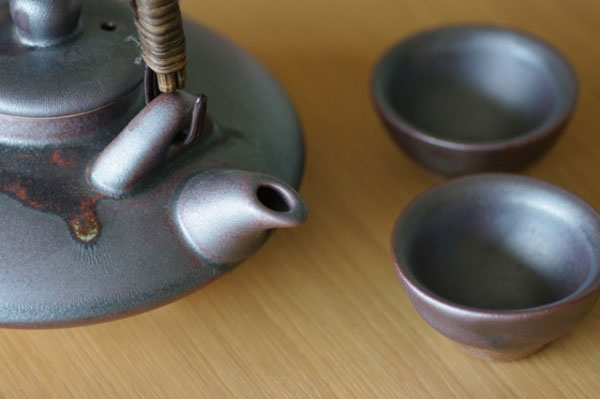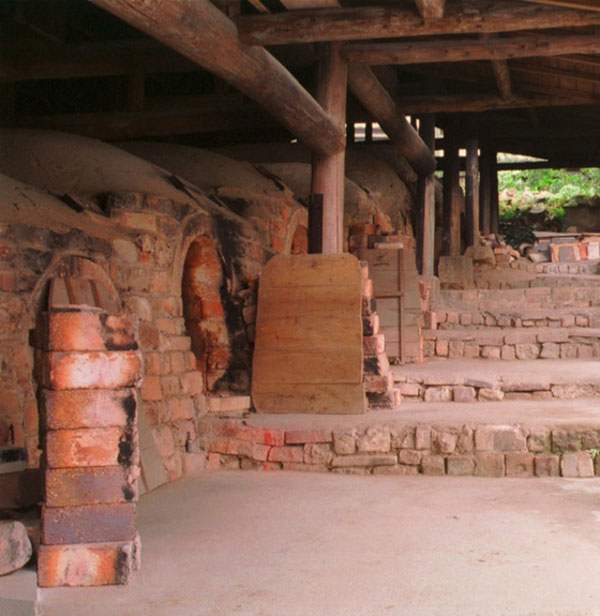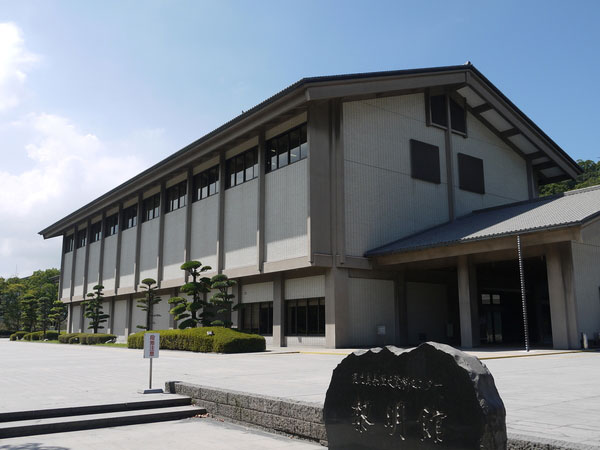
- Ceramic
- Kagoshima
Satsuma ware Satsuma yaki
Porcelain recognized worldwide
a rich variety of styles and types
Description
What is Satsuma ware ?
Satsuma ware (called satsuma yaki in Japanese) is a form of porcelain produced in Kagoshima prefecture. There are three types of Satsuma ware: white, black, and porcelain. Then there are six categories: tateno, ryumonji, naeshirogawa, nishimochida, hirasa, and tanegashima.
Because shiro means white in Japanese, the white type of Satsuma ware is called shiromon, which uses transparent glaze on light yellow porcelain, treats cracks on the surface, adds decoration on the cracks, and is mainly represented by ornaments. Similarly kuro means black in Japanese and the black type of Satsuma ware is called kuromon, which uses potter's clay with high iron content as well as colored glaze. This craft is mainly used for the drinking of shochu (alcoholic beverage distilled from mainly rice, barley, or sweet potato). The main raw material of Satsuma ware is supposed to be porcelain stone, but this is no longer being produced.
The main areas that produce Satsuma ware are the Kagoshima prefectural cities of Kagoshima, Ibusuki, and Hioki. There are also three kiln sites remaining today: Naeshirogawa, Ryumonji, and Tateno. Naeshirogawa initially focused on producing black Satsuma ware, but today they have shifted to the white pottery. The Ryumonji kiln produces kuromon drinking vessels, while Tateno produces shiromon tea utensils for use as gifts.
History

The history of Satsuma ware goes back to the battles of Bunroku and Keichou from around 1529 to 1598. Japan had fought in the Imjin War, which was also known as the Porcelain War, in which Yoshihiro SHIMAZU, Lord of the Satsuma domain, brought back eighty Korean pottery masters, and thus Satsuma ware was born. The Korean pottery masters Boku Heii and Kin Kai opened up kiln sites within Satsuma and worked on various styles of porcelain using their respective styles. This resulted in divergent schools and traits that are present in Satsuma ware today.
Modern Satsuma ware inherits these traditions and retains its Korean customs. The kiln of Chin Jukan is the origin of overglaze Satsuma porcelain which has inherited distinctive Korean customs.
Also, the Araki porcelain kiln still run by descendants of Boku Heii uses a typical Korean left-turning pottery wheel and unique natural glaze and maintains the traditions of their ancestors.
During an era of change between the Edo (1603-1868) and Meiji (1868-1912) periods, the domain of Satsuma exhibited Satsuma ware at the Paris World Fair, deeply impressing the Europeans and cementing its identity as a porcelain. In 2007, the name of Satsuma gained prestige with a Satsuma Ware Traditional Arts Exhibition in Paris at France's National Ceramics Museum.
General Production Process

- 1. Loam production
Several types of potter's clay are kneaded to produce loam. The raw materials are finely ground and mixed.
Kuromon and shiromon use different types of clay for their loam. Shiromon becomes a dark brown after kneading and kuromon becomes a dark reddish-brown. By cleverly mixing white clay, the main raw material, with other clays, a unique texture separate from that of both porcelain and ceramics is produced.
- 2. Elutriation
With shiromon, clay is kneaded by repeating elutriation, a process in which clay is dissolved in water and the sediment is collected and dried, producing a fine potter's clay. Elutriation is not carried out for kuromon, as the aim is to treat the simple texture of the clay with great care. By producing fine grains through elutriation, a model of shiromon with smooth surfaces can be produced.
- 3. Casting
Pieces are cast using a potter's wheel. Other methods include producing by hand, plaster casting, and unglazed casting. Casting is carried out in a particular way depending on the kiln site. These days, casting with a potter's wheel is the mainstream method.
- 4. Finishing of drying/casting
The pieces are dried before finishing. Parts that have not dried smoothly are handplaned or chiseled. Kuromon uses ornamental design, embossed carving, or decoration with a spatula. After baking shiromon, the next step is decoration.
- 5. Drying
Pieces that have been cast and finished are dried under the sunlight. Depending on the piece, moisture may be adequately removed by drying with hot air.
- 6. Bisque
Bisque is fired at 750-850℃ (about 1382-1562℉) for around 15-16 hours. By hardening the bisque surface, the appearance of the glaze improves. After the bisque process, the piece cools, the rough surface texture is removed, and the pieces are made smooth.
- 7. Glazing
Shiromon uses transparent glaze. The main techniques used are dripping and soaking. However, several types of glaze are used for kuromon. Glazing is carried out with black, deep brown, and very light caramel brown glaze in a mixture that changes depending on the piece.
- 8. Glaze firing
The pieces are baked at around 1250℃ (around 2282℉) for 12 hours or longer. Methods include the use of an oxidizing flame or the use of a flame that reduces oxygen. The style of firing changes depending on which method is used. The characteristic fine surface cracks of shiromon occur during the cooling period after firing
- 9. Overglazing
Overglaze is applied only to shiromon. Glaze fired products are baked at a temperature of 720 to 800℃ (about 1328 to 1472℉) for around six hours. After line drawing, color is applied. Shiromon pieces are gorgeous in appearance, as they are brightly colored with red, green, yellow, purple and gold. To make the ornaments golden in color, gold paint is applied by either directly painting or adding gold overlay after overglazing. Then the pieces are baked at 600 to 680℃ (about 1112 to 1256℉).
- 10. Completion
The pots are removed from the kiln. Since they were coated with alumina prior to baking, the roughness of the base must be removed. Once the scattered pieces of glaze are cleaned up, the piece is complete.
Where to Buy & More Information
Reimeikan Museum

-
Address
-
Tel.+81-99-222-5100
-
ClosedMondays (open if Monday is holiday and closed the next day), 25th of every month (open if 25th is a Saturday or Sunday), and December 31 to January 2
-
Business Hours9am to 6pm
-
Website
See more Ceramic
- Imari ware/Arita ware
- Hasami ware
- Kutani ware
- Mashiko ware
- Shigaraki ware
- Bizen ware
- Hagi ware
- Koishiwara ware
- Mino ware
- Tobe ware
- Tokoname ware
- Karatsu ware
- Kasama ware
- Satsuma ware
- Iga ware
- Mikawachi ware
- Agano ware
- Otani ware
- Obori-soma ware
- Tsuboya ware
- Aizu-hongo ware
- Shodai ware
- Echizen ware
- Akazu ware
- Tamba-tachikui ware
- Yokkaichi-banko ware
- Izushi ware
- Kyo ware/Kiyomizu ware
- Iwami ware
- Amakusa ceramics
- Seto-sometsuke ware
- Sanshu Onigawara Crafts































































































































































































































































































